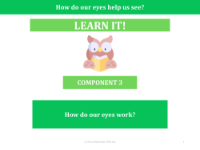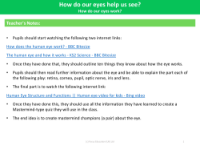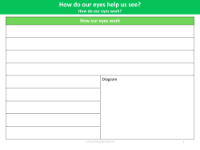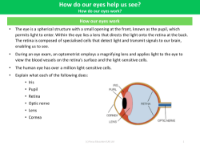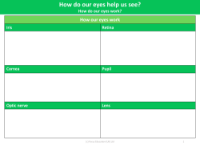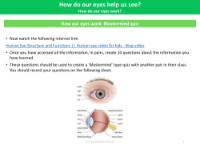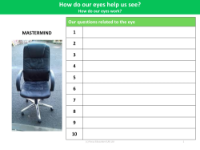How do our eyes work? - Light - Year 6
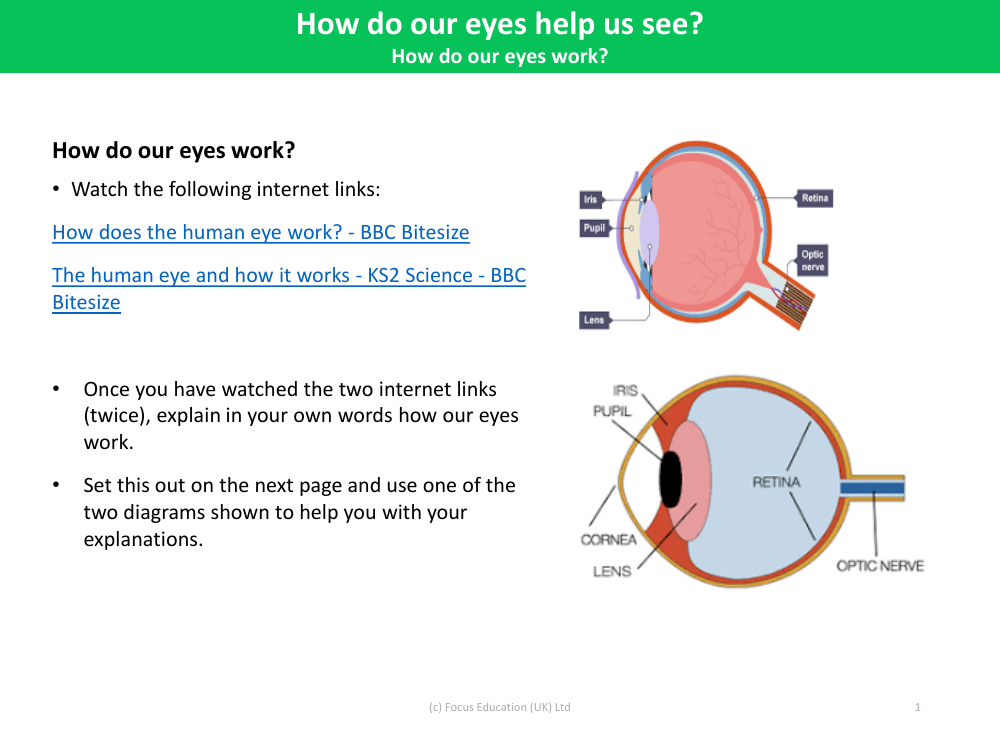
Science Resource Description
The human eye is a complex organ that allows us to perceive the world in vivid detail and colour. To understand how our eyes work, we can think of them as sophisticated cameras capturing live images. When light from an object enters the eye, it first passes through the cornea, the transparent front layer that helps to focus the light. The light then travels through the pupil, the black circular opening in the centre of the iris, which is the coloured part of the eye. The iris adjusts the size of the pupil to control the amount of light entering the eye, much like the aperture of a camera.
After passing through the pupil, the light rays converge through the lens, which further fine-tunes the focus, ensuring that the light hits the retina at the back of the eye correctly. The retina is lined with photoreceptors known as rods and cones; rods detect light and dark, while cones are responsible for colour vision. These photoreceptors convert the light into electrical signals that are then sent to the brain through the optic nerve. The brain processes these signals, allowing us to see the world around us. When explaining how our eyes work, diagrams can be particularly useful to illustrate the path of light through the eye and the role of each component in the process of vision.
